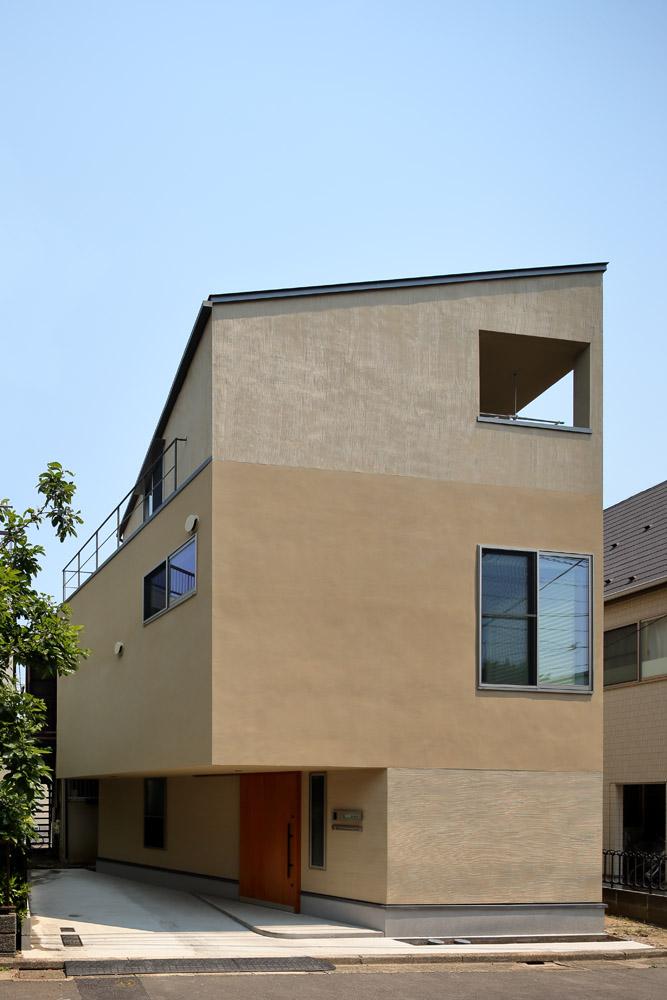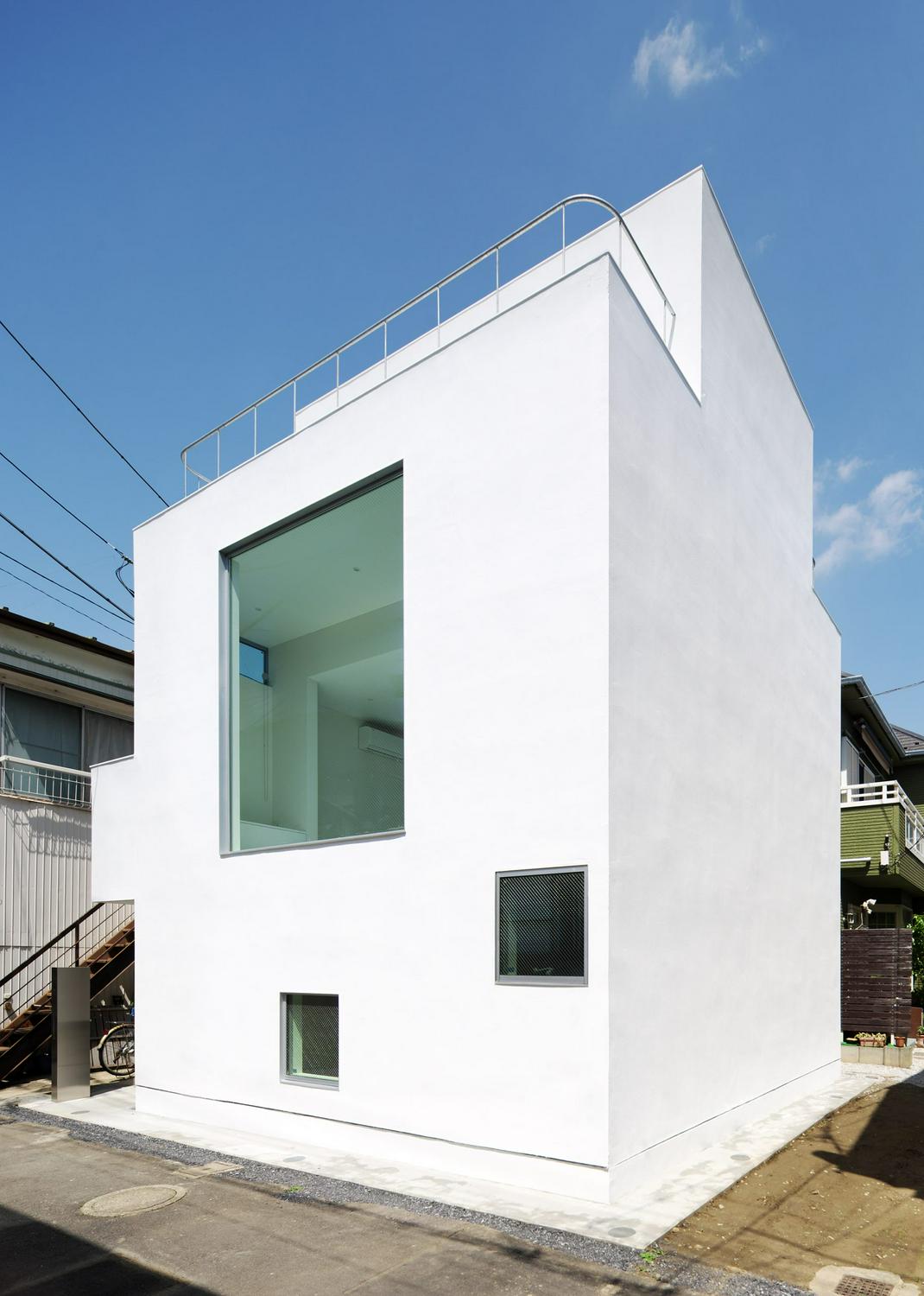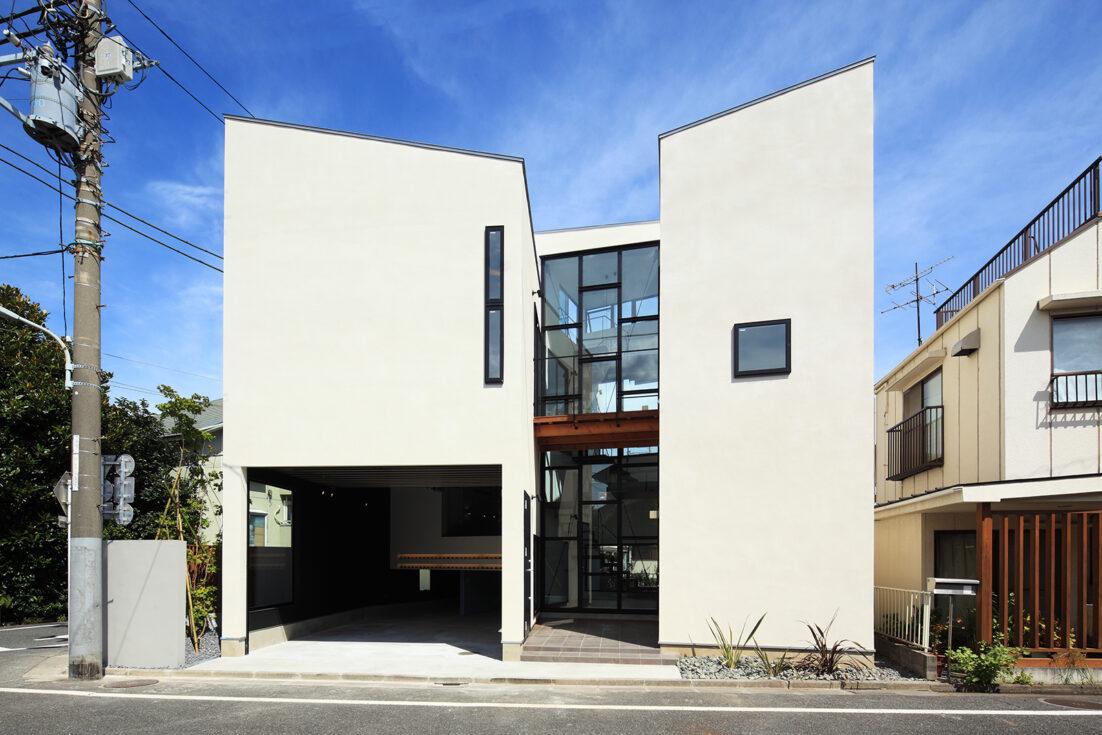What is a "painted wall", which is a stylish exterior wall?
The exterior wall is an important element that greatly affects the impression of a house. So, why not achieve a stylish home by incorporating "painted walls" that will make people on the street stop and take a look?
Many people may imagine old-fashioned, traditional exterior walls when they hear the word "painted wall". However, painted walls have been gaining attention in recent years for their superior functionality and design.
In this article, we will explain the advantages, disadvantages, and types of painted walls, as well as providing examples with photos. We hope you will enjoy the beautifully painted walls created by the unique skills of our craftsmen.
By the end of the article, you will have a deeper understanding of painted walls and will be able to visualize the painted walls you actually want to incorporate.
<Table of Contents>
- 1.What is "painted wall" with a craftsman's sense of style?
- 2.3 advantages of painted wall
- 3.4 disadvantages of painted wall
- 4.5 major types of painted wall materials
- 5.What materials other than painted walls are used for the exterior of houses?
- 6.What to do when painted walls get dirty? What about maintenance?
- 7.The cost price of painted walls
- 8.Painted walls on the interior would give it a modern look!
- 9.Painted walls can be created by DIY, but please be aware of these attentions
-
10.7 examples of stylish homes with painted walls
- 10-1.Residence with beautiful white colored painted walls with a strong presence
- 10-2.Elegant painted wall house with contrast of white and brown
- 10-3.Exterior walls with painted walls to soften the cool gray color
- 10-4.Deep gray painted walls that give a sense of luxury
- 10-5.Spacious entrance with a Japanese-style feeling
- 10-6.Gorgeous living room with beautiful spiral staircase and plaster ceiling
- 10-7.Kitchen with calm pale green painted walls
- 11.Summary
1. What is "painted walls" with a craftsman's sense of style?



"Nurikabe(塗り壁)" is a method of wall construction in which several layers of wall material made of natural materials are applied on top of a base coat. The surface layer is called the "top coat," and the wall is finished by coating the top coat with a wall material made of clay, plaster, diatomaceous earth, or other natural material.
Throughout Japanese history, painted walls have been used on the exterior walls of private homes, storehouses, castles, and other structures. The durability and safety proven by their long history, as well as the craftsmanship of the design, have attracted attention, and in recent years, more and more people are interested in incorporating lacquered walls into the exterior walls of their homes.
All painted walls are done by hands of craftsmen. Using natural materials such as soil and sand to reflect the individuality and experience of the craftsman, it is truly a traditional Japanese method of construction.
It is also widely used not only for Japanese-style houses but also for Western-style houses, as its texture can be freely changed depending on the finishing method.
2. 3 advantages of painted walls
Here are three advantages of selecting painted walls for exterior walls. Some of the advantages are not found in other wall materials, so please check them out.
2-1. It will be a one-of-a-kind stylish exterior wall



All of the work is done by hand by craftsmen, making each wall a one-of-a-kind exterior wall. The finish varies greatly depending on the type of brush and the workmanship of the craftsman, so if you communicate your ideal finish, you can create a unique and fashionable exterior wall.
If you want to create a unique exterior wall, we also recommend that you consult with us to see if we can incorporate an original design.
A flexible contractor will be able to fulfill your wishes, such as putting your family's handprints on the painted wall, or embedding glass or marbles to make it more colorful. The originality that can only be achieved through the handiwork of craftsmen is one of the great attractions of painted walls.
2-2. Enjoy a natural finish
Another appeal of painted walls is that they offer a natural finish. Since many natural materials such as soil and plaster are used, you can feel the natural texture that oozes from the materials.
Furthermore, while wall materials that are "put up and finished" such as siding and tiles are uniform in design, painted walls are not necessarily uniform because they are handcrafted. Depending on which wall material is chosen for the finish and how it is applied, the feel and atmosphere will be completely different, allowing you to enjoy the unpretentious, natural warmth that only handcrafted work can provide.
2-3. Excellent fire resistance
Another advantage of painted walls, which are mainly composed of natural materials, is that they are highly fire-resistant. Mortar and plaster used for painted walls are considered "noncombustible materials" under the Building Standard Law, and are highly evaluated for their fire resistance.
This characteristic has been used since ancient times. Japanese traditional houses are often made of flammable paper materials such as shoji and fusuma sliding doors, but by partitioning the interior and exterior walls with non-flammable painted walls, flames were prevented from spreading in the event of a fire.
3. 4 disadvantages of painted walls
Although attractive, painted walls are not all advantages. Everything has its advantages and disadvantages, so make sure you know the disadvantages as well. Understanding the disadvantages will help you create the ideal exterior wall.
3-1. High cost and long construction period
As we have already mentioned, the disadvantage of painted walls is that the cost is higher because all the work is done by hands. In addition, there is no fixed price, as the cost is determined by a variety of factors, such as the wall material chosen, the extent of the work, and the degree of difficulty of the pretreatment.
Nevertheless, it is not surprising that the price is higher, since craftsmen spend a lot of time and effort on the work, using detailed techniques.
It also takes a longer construction period than siding and other methods. A wall is not finished when it is painted; it is not finished until it is firmly cured. It is necessary to allow for a reasonable construction period.
3-2. Prone to cracking
Another disadvantage of painted walls is that they are prone to cracking over time due to moisture loss and volume reduction. Cracks in painted walls can occur no matter how careful you are, so you may feel more comfortable if you recognize in advance that regular maintenance is necessary.
However, while painted walls are prone to cracking, they are also easy to repair. Light surface cracks can be maintained by yourself.
3-3. Stains are easily visible
Another drawback of painted walls is that they tend to show dirt. Normally, any exterior wall will become dirty due to irritation from rain, wind, and ultraviolet rays. However, in the case of painted walls, the nature of the finishing process makes the surface uneven, making stains stand out even more.
Therefore, to keep it clean, it will require regular maintenance, just like cracks.
Some types of painted walls are less likely to show stains. Plaster, for example, has the advantage of being relatively stain-resistant due to its self-cleaning effect caused by its strong alkalinity and high waterproofing properties. When choosing painted walls, a careful comparison of the characteristics of each wall material may help reduce the disadvantages.
3-4. The finish depends on the skill of the craftsmen
Because painted walls are done by hand, the finished product is in the hands of the craftsman. Some people may feel uneasy because the overall appearance as well as the detailed sense of design is left up to the craftsman.
In order to achieve the ideal exterior wall, it is necessary to make efforts such as checking past cases of the design company you request and communicating your wishes without compromise during the meeting.
5 major types of painted wall materials
Here we introduce 5 types of wall materials that are often used in actual construction. Since different materials have different characteristics, it is important to check the finish and functionality of each material to ensure that you will not regret your choice.
4-1. Slippery "plaster" with fine particles



Plaster, a typical type of painted wall, uses slaked lime (calcium hydroxide) as a raw material. It is a naturally occurring ingredient originally derived from coral reefs.
The main characteristics of plaster are its antibacterial and anti-fungal properties. This is due to the strong alkaline nature of slaked lime. It also has excellent durability and fire resistance, which is why it is used for buildings such as castle walls, shrines, and temples.
It is smooth to the touch with fine particles and is resistant to dust and dirt, so it is recommended for people who do not like a rough texture or who want to create a Western-style home.
4-2. "Diatomaceous earth" with coarse and rough particles
Diatomaceous earth, which we hear a lot about in recent years, is also often used for painted walls. Diatomaceous earth is a type of soil formed when the carcasses of diatoms, a type of algae, accumulate on the ocean floor. Diatomaceous earth has a rough, coarse texture and is often used for the exterior walls of Japanese-style houses.
It also has the added benefit of preventing condensation and other problems due to its excellent humidity control properties. Plaster, which is often compared to diatomaceous earth, also has excellent humidity control properties, but diatomaceous earth is more effective. If you live in an area with high humidity, please consider using diatomaceous earth.
4-3. "Mortar" with low price



Mortar is recommended for those who want to keep prices low. Mortar is a coated wall material made by mixing cement with sand and water.
Although it is susceptible to cracking and requires regular maintenance, it is the least expensive of the five types introduced here, making it easy to use. Another advantage is its superior design.
However, mortar can be finished in a variety of ways, and the skill of the craftsman is clearly evident. Therefore, it is important to find a skilled craftsman who can fulfill your ideal.
4-4. Traditional and modern "mud walls"
"Tsuchikabe(土壁)", the most widely used wall material in Japan's history, is a wall material suited to Japan's humid climate. As the name suggests, it is a natural material made of hardened soil, and excels in functional aspects such as heat insulation, fire prevention, humidity control, and soundproofing.
As time went by, the development of economical and cost-effective wall materials led to a decline in the use of earthen walls, but recently, the "environmentally and people-friendly material" and "high functionality" are once again attracting attention.
There is a wide range of clay wall textures, from rough and earthy to polished and smooth surfaces. Another point that allows for originality is that the texture and color can be adjusted depending on the ingredients and mixing conditions of the soil used in the mixture.
4-5. "Jolypate" has the top share of the domestic market
Jolypate is a type of mortar coating sold by AICA Kogyo, a company that handles housing-related products. The viscous wall material is resistant to cracking and has excellent fire resistance.
Jolypate's greatest appeal is its unparalleled variety of designs. With more than 180 colors and 100 designs, you can find the ideal exterior wall to match the atmosphere of your home. Jolipat is recommended for those who wish to have a unique exterior wall that cannot be found in any other house.
What materials other than painted walls are used for the exterior of houses?
Here is a brief introduction to materials other than painted walls. Please take a look at the features of each and compare them.
5-1. Reasonable "siding"



Siding is an exterior wall material in the form of panels. Because the panels are inserted into place, installation is simple and does not require the advanced skills of craftsmen as is the case with painted walls. In this respect, labor and construction costs can be reduced, and the construction period is also short. It is said to be the most widespread wall material in Japan today.
5-2. "Tile" with excellent durability
Tiles are made by baking natural materials such as stone and clay at 1,300 degrees celsius. Therefore, tiles can withstand heat up to at least 1,300 degrees Celsius, and can be said to have excellent fire and heat resistance. Another important feature is that they are made of an extremely hard material, making them durable and maintenance-free over the long term.
6. What to do when painted walls get dirty? What about maintenance?
Although painted walls have the disadvantage of being easily visible, it is a good idea to learn how to maintain them when you find stains. Here are some tips on how to maintain painted walls.
If it has not been too long since the stain appeared, you can maintain it yourself. Try the following order.
- Wash with water using a hose
- Scrub with a soft brush
- If water does not remove the dirt, apply a cleaning agent (e.g., Purelox-S)
The rule of thumb for maintenance of painted walls is to start with the least irritating and gentlest methods. If washing with water does not remove the paint, scrub with a brush, and if that does not remove the paint, use a cleaning agent.
For persistent stains due to age or stains in areas that cannot be repaired by yourself, it is recommended that you hire a contractor to maintain the wall. Although it is expensive, it saves time and effort, and the contractor will clean the wall appropriately according to the wall material to ensure a satisfactory finish.
7. The cost price of painted walls
The market price for the cost of painted walls is said to be "about 1 to 1.5 million yen" for a house of about 30 tsubo (about 1.5 square meters).
However, as mentioned earlier, the cost of painted walls is not a fixed price, but is determined by a variety of factors and cannot be generalized. Prices vary greatly depending on what type of finish is ideal, which material is chosen, and so on.
Therefore, it is important to ensure that the client's budget and ideals are communicated during the meeting with the contractor if he/she is going to commission a painted wall. Since all painted walls are made by hand, the contractor will be able to make a proposal that meets the client's needs.
8. Painted walls on the interior would give it a modern look!



When many people hear the term painted wall, they may think of exterior walls. However, many benefits can be received even when painted walls are used for interior decoration.
First, the "humidity control" characteristic of painted walls is ideal for keeping room temperature cool in summer and warm in winter. Furthermore, the use of fire-retardant painted walls for indoor use will provide peace of mind in the event of a fire, as flames are less likely to spread. The superior functionality of painted walls can provide a safe and comfortable indoor environment.
Another appealing point is that it brings the unique texture of painted walls into the interior. It will be a wonderful space where you can enjoy the modern atmosphere of natural materials on a daily basis.
9. Painted walls can be created by DIY, but please be aware of these attentions
Painted walls can also be DIY. Recently, there are sets available that can be easily DIY'd by a single woman.
However, there is a caveat to DIY painted walls. Although painted wall materials are natural, they are not 100% safe. Some ingredients may be dangerous if they accidentally get into the eyes or come into contact with the hands, so care must be taken when handling them.
In many cases, amateurs cannot achieve a satisfactory DIY finish when they attempt to paint walls that were originally done by craftsmen with decades of training. In particular, the work on exterior walls is extensive and difficult, so if you want a beautiful finish, it would be safer to leave it to a professional.
10. 7 examples of stylish homes with painted walls
Finally, we pick up seven examples of stylish houses with painted walls.
If you would like to speak with or be introduced to an architect who can design a stylish painted wall that meets your needs and requirements, japanese-architects.com's architect referrals are also useful.
10-1. Residence with beautiful white colored painted walls with a strong presence



The exterior walls of this residence were painted with a white color that has a presence that reflects the light divinely. The landscaped front has picture windows with black frames, firmly bringing nature into the life of the house.
On holidays, you can take care of your car in the garage or relax on the grassy rooftop, and the building is sprinkled with small pleasures.
10-2. Elegant painted wall house with contrast of white and brown



This residence uses white painted walls with a gentle impression and solid wood with a beautiful grain on the exterior walls. The warm contrast of white and brown creates an elegant finish that gently welcomes visitors.
The two living rooms, which were realized through discussions between the client and the architect, separate the public and private spaces, creating a functional residence.
10-3. Exterior walls with painted walls to soften the cool gray color



This house uses only cool and graceful gray colors. To avoid bias toward a cold impression, the exterior walls are painted with a craftsman's warmth.
At first glance, the house looks crisp, but once you step inside, you will find a natural space with solid wood used everywhere. It is truly a house that fascinates with the gap between inside and outside.
10-4. Deep gray painted walls that give a sense of luxury



This residence uses chic gray and black exterior walls that exude a sense of luxury. Although these colors tend to give a plain impression, the large area of gray walls is painted to create a warm atmosphere.
The walls of the terrace overlooking the neighborhood park are black to represent a "frame cut out of the park".
10-5. Spacious entrance with a Japanese-style feeling



This is a one-story residence with a traditional Japanese atmosphere. When you step inside, you are greeted by a spacious entrance with stone tiles that offer a sense of luxury.
Natural solid wood was used for the ceiling and the left wall, while the front wall was painted with an uneven surface to create an elegant entrance. In addition, indirect lighting designed into the ceiling and under the shoeboxes leads to an even more stylish space.
10-6. Gorgeous living room with beautiful spiral staircase and plaster ceiling



A large spiral staircase is designed in the center of the living room in this house. Normally, it is very difficult to use painted walls on a curved ceiling. It is no exaggeration to say that even professional plasterers are required to have a high level of skill, and this is a skill that can only be achieved by craftsmen who are skilled in their knowledge and experience.
The atrium living room also offers a sense of openness and luxury, making it the perfect floor plan for a relaxing space. You will be able to spend luxurious time with your family in a gorgeous room with a high design quality.
10-7. Kitchen with calm pale green painted walls



The kitchen in this house has painted walls and ceiling in a gentle shade of green. The color is not crisp, but rather calm and comfortable, so it does not make a strong statement.
In addition, a "Untei(horizontal ladder)" is located in the hallway on the second floor for the children to enjoy their days. After the children have grown up, it can be used as a small laundry room.
11. Summary
"Nurikabe(塗り壁)" is a handcrafted method used by artisans to create unique exterior walls that cannot be found anywhere else. This construction method has been used throughout Japan's long history, and has excellent fire resistance and durability, making it possible to build a home where the family can spend time together.
However, it is important to note that the beauty and design of the finished product depends on the skill of the craftsman who does the work. To ensure that you will not regret your choice, please communicate your budget and wishes to the contractor and have a detailed discussion with him or her.
At japanese-architects.com, our first-class architectural advisors will listen to your wishes and introduce architects and design firms who want to build a custom-built house. If you would like to have stylish painted walls installed by skilled craftsmen with a sense of style, please feel free to contact us.




















